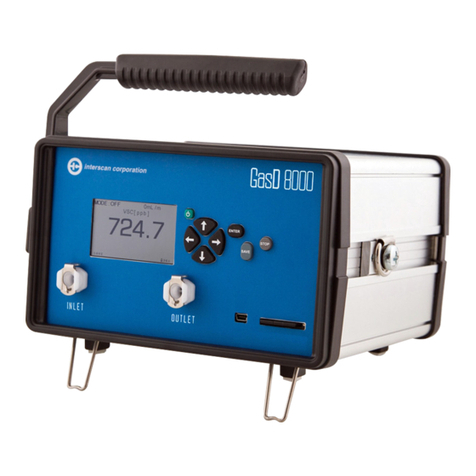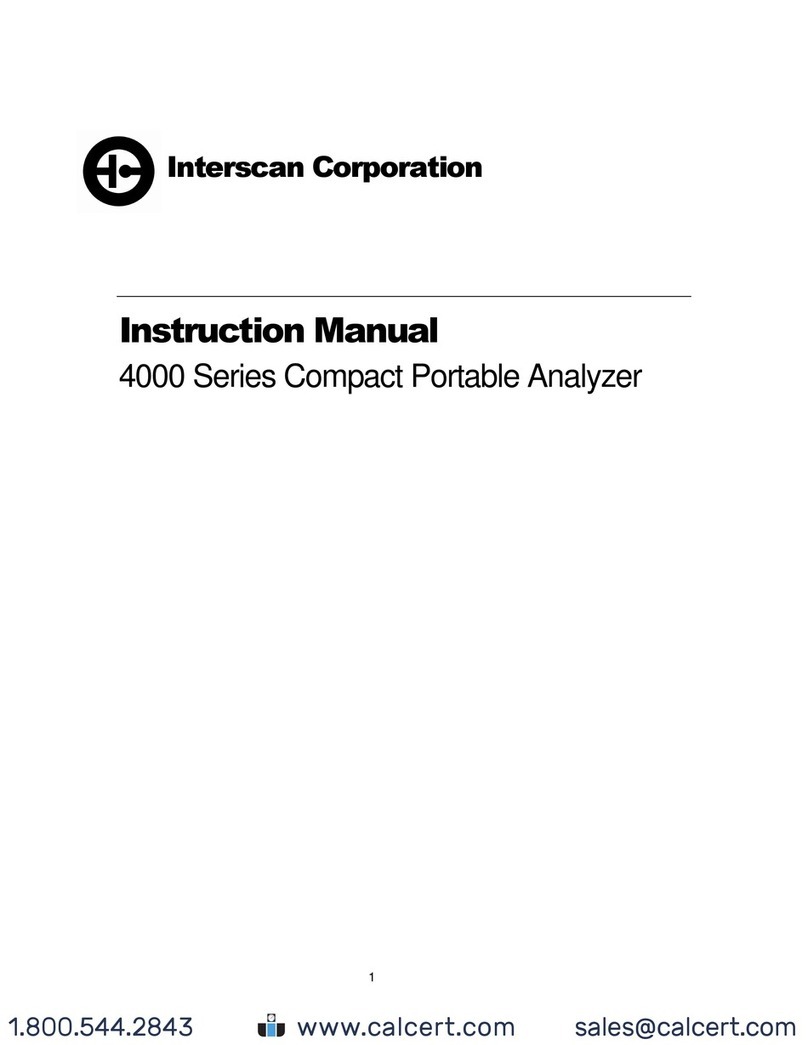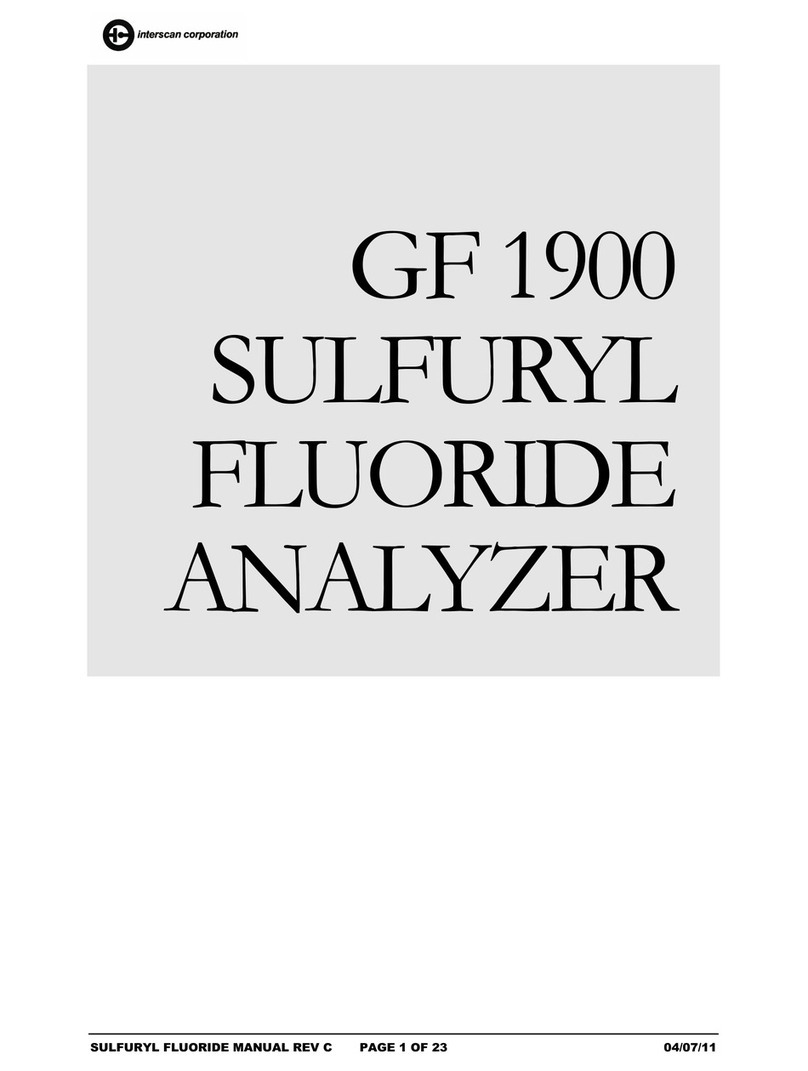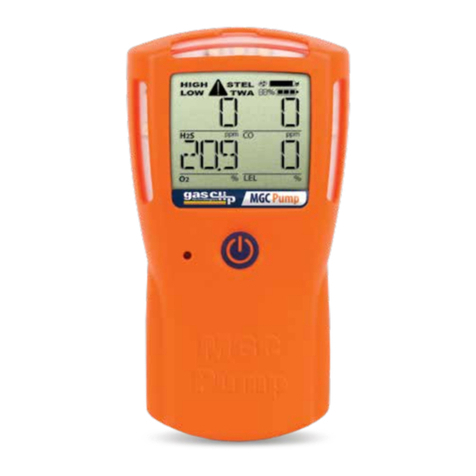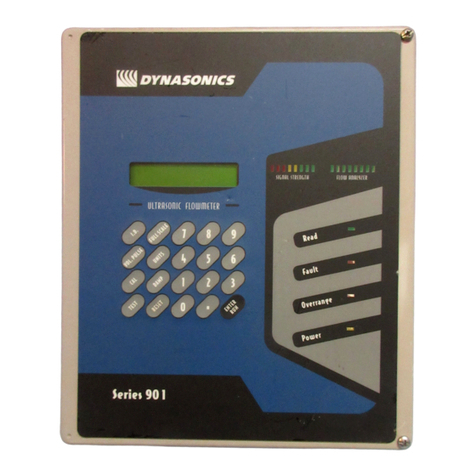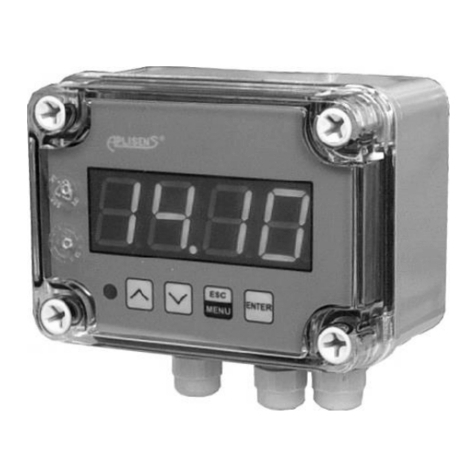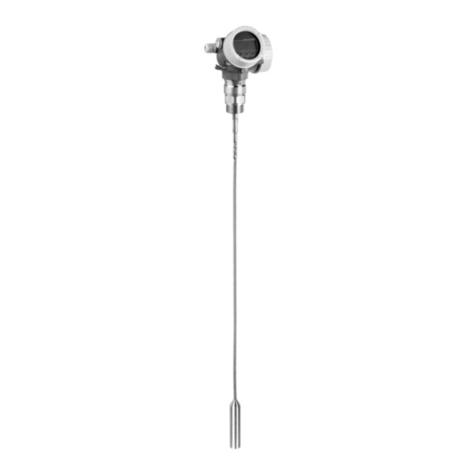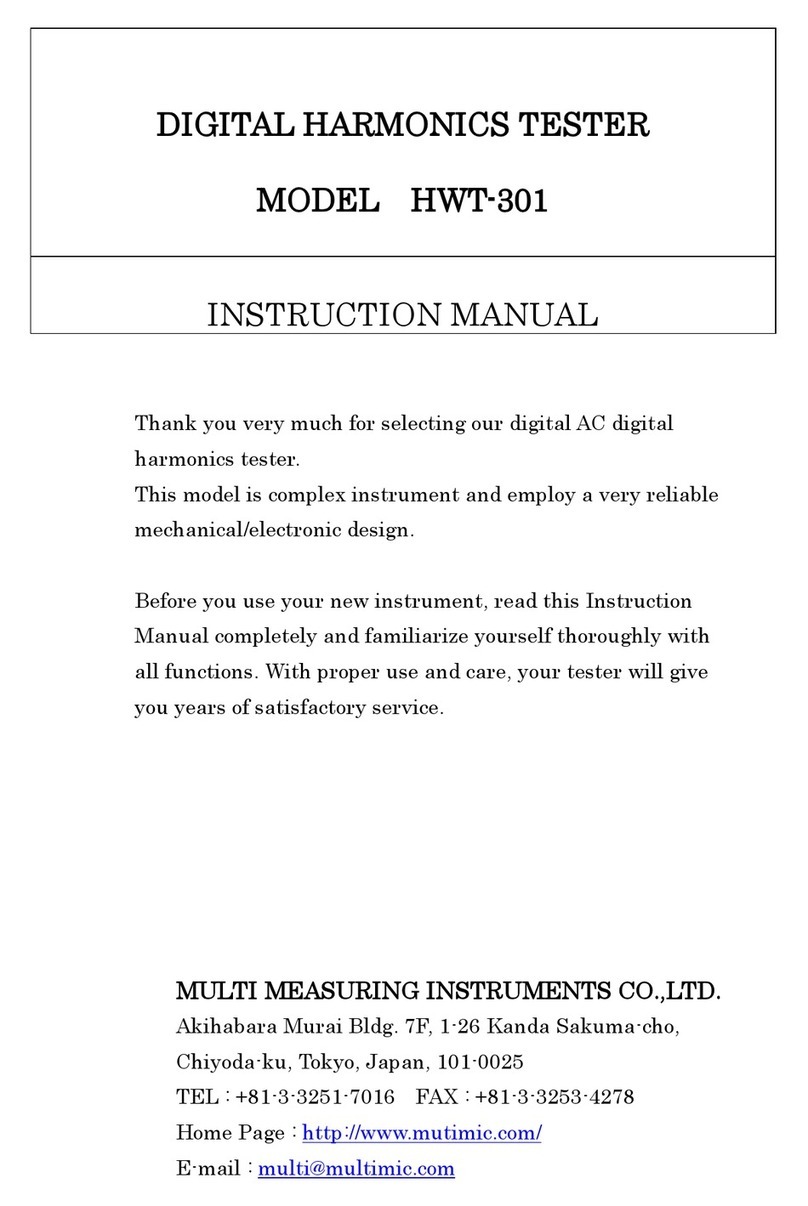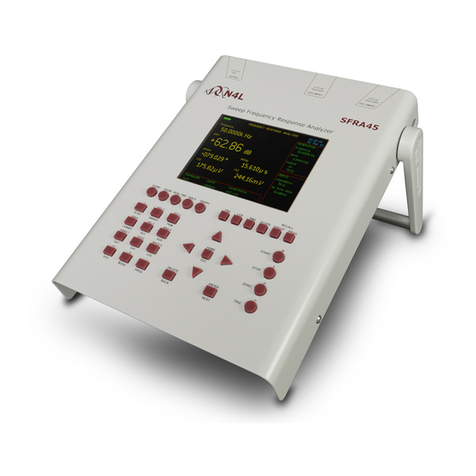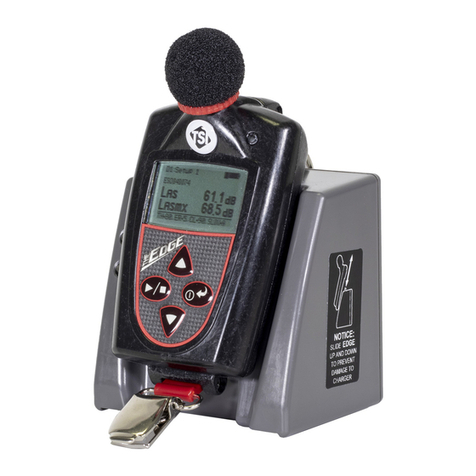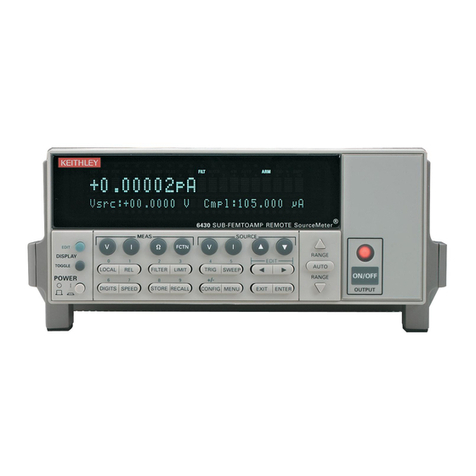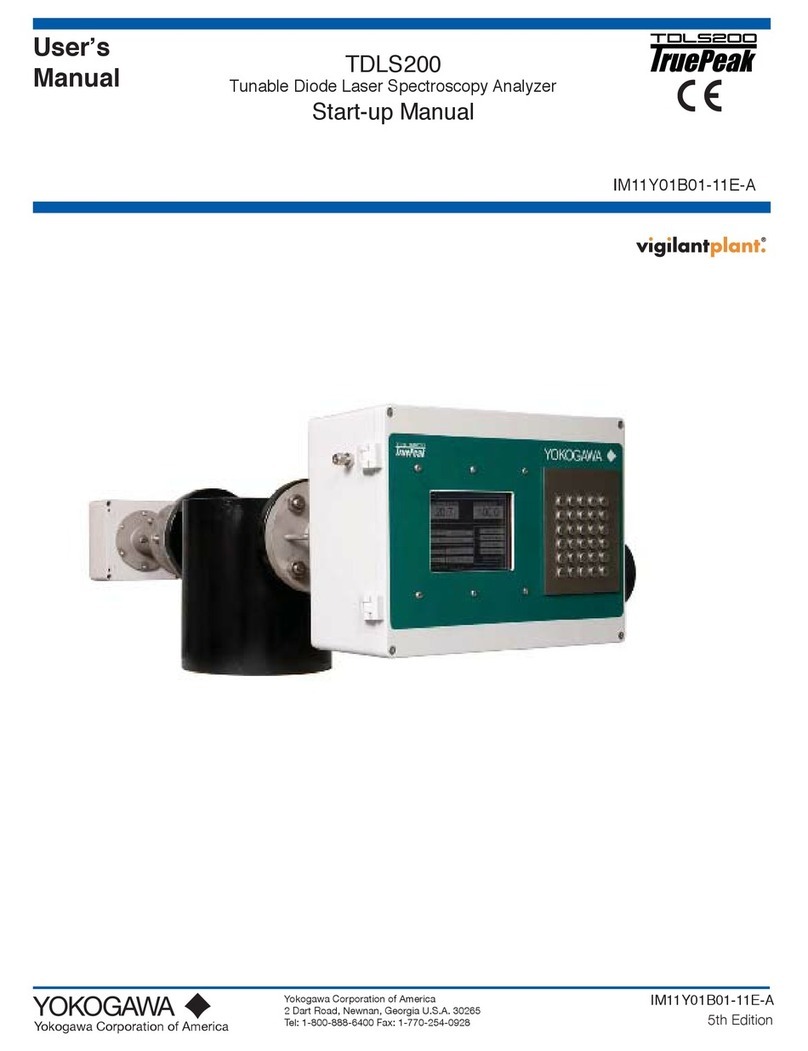901-0014 Rev A
pack.
NOTE: Disregard a LO BAT indication when using an AC power source.
CALIBRATION
Note: Should be performed every 3 months or more frequent.
The Sulfuyl Fluoride monitor’s sensor must be stable for readings to be correct.
Prolonged non-use caused the sensor to be unstable because it must be exposed to the
Bias voltage periodically. If the analyzer has not been used in a duration of two weeks,
or longer, you must power “ON” the monitor and allow it to stabilize. Depending on the
model revision of your analyzer, you can lift one side of the furnace fuse, or on newer
Monitors turn off the RED Furnace switch (up position) to prolong the life of the furnace
during stabilization.
In general, the monitor will indicate an upscale reading when powered on and drift
downward while the monitor warms up. Upscale readings can exceed the full scale
and does not necessarily mean there is a malfunction. The upscale reading must
be stable within the warm-up period. Continued drifting after the ready light comes
on will create an erroneous zeroing of the analyzer. (A true zero cannot be achieved).
Additional run time may be required if this condition exists. You may only perform
clearance or calibration once the monitor is stable and zeroed.
The instrument is calibrated by introducing, a known concentration of Sulfuryl Fluoride
gas (5 ppm), and adjusting the SPAN control to correspond to the known analysis of
the gas.
NOTE: New or replacement sensors may require approximately 24 hours to
stabilize prior to zeroing.
With the unit turned on and sufficiently warmed up with the READY light illuminated,
zero the analyzer with the ZERO control. Fill a sample bag with Sulfuryl Fluoride
standard, and connect it to the inlet, allowing the gas to flow for at least 3 minutes. DO
NOT ATTEMPT TO INTRODUCE THE SO2F2STANDARD DIRECTLY FROM A
PRESSURIZED SOURCE. A SAMPLE BAG MUST BE USED. Do not introduce
concentrations higher than 50 ppm.
The CAL control is used to set the meter to a value corresponding to the span gas
concentration. Disconnect the sample bag. Allow to stabilize for 3 minutes. Repeat
procedure two additional times. Do not rezero the instrument, it is not necessary to wait
for the meter to reach zero, before connecting the sample gas for the second and third
time. The readings should be within ± 2 divisions of the average of your three readings.
Best Calibration is achieved by using as few sample bags as possible. A five liter
sample bag or larger is recommended. This will generally cover the three samples.
Readings can sometime jump when the sample bag is disconnected and then drop
down. This is a normal condition which occurs due to changes in pressure.




















